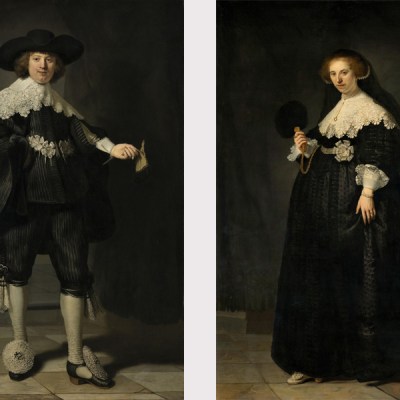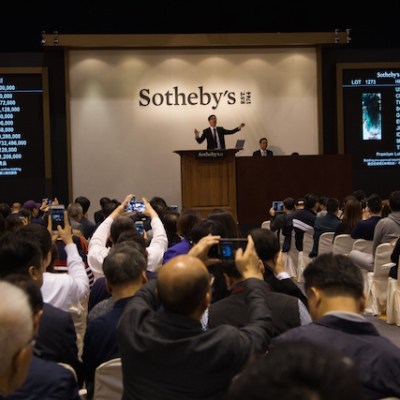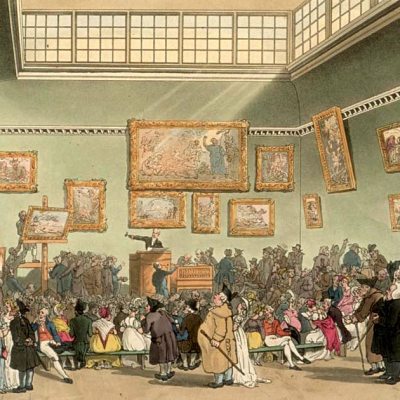In recent years, global media coverage of multi-million dollar auction prices, combined with the rise of art as an alternative asset class, has focused more attention on the international art market than ever before. That increase in awareness has brought the issue of transparency to the fore, but what exactly do we mean by it? To the public – the market’s client base – transparency largely means more clarity about terms and conditions, pricing, and consumer rights when buying and selling. However, to politicians, interest groups, the media, and the many and varied corners of the market itself, concerns over transparency focus on a far wider range of topics: provenance, finance, crime, and market manipulation, to name the most obvious. The general attitude seems to be that improved transparency will boost confidence and reduce the risk of things going wrong.
With the trade in antiquities, concern gravitates towards looting and fakes, with money laundering and theft following close behind. With finance around high-end auctions, critics argue that a lack of transparency allows auction houses, dealers and collectors to skew the market to give themselves an unfair competitive advantage or create bubbles to sustain their holdings in artworks that might otherwise decline in value. For the trade, though, increased transparency can cause problems. Thanks to the internet, it is far easier for potential buyers to find out what a dealer paid for an item, making it much more difficult for them to cover their costs and sell at a decent profit; most buyers are not interested in the time, effort, expertise, or the restoration, transport or other costs that the dealer has to account for in acquiring the item, as these are not seen as contributing to its value. How justified are such concerns, and what should be done?

Let’s deconstruct all of this a little. Every transaction really only has four key variables: the buyer, the seller, the goods, and the money. Each brings its potential to the deal, and its risks. Due diligence on behalf of both buyer and seller can tackle much of that risk, but not all of it. How can you be absolutely sure where the buyer’s money comes from? How robust is the seller’s paperwork? And who exactly are they? Surely the answer is to regulate the art market directly, like the worlds of finance, insurance, and the law, so that officialdom can intervene where necessary and public confidence in honest trading does not have to rest on what some view as little more than a person’s word?
The first thing to understand is that hundreds of laws already regulate the market (you can download the list that applies to the UK art market from the British Art Market Federation website), but experience tells us that direct regulation rarely solves the problem. The establishment of the Conseil des Ventes in France in 2000 to govern the market once France liberalised its auction laws did nothing to prevent the cols rouges scandal at the Drouot auction house nine years later, where the closed shop of portering services masked a criminal network of theft. Nor did the Wine Investment Association’s establishment of a rigorous code of practice in 2003 prevent people from falling victim to rogue funds in the years that followed. Then we have the age-old issue of what exactly art is: if you can’t define something clearly, then you can’t legislate for it effectively.
But more pressing, perhaps, is where questions of art market transparency overlap with debates about public interest and the right to privacy. If politics is to intervene here, then the lawmakers as a whole need a better understanding of how to balance public interest with the practical needs of business. That means consulting trade professionals to a far greater degree than happens now, rather than relying on the opinions of academics and those lobbying against art market interests. We also need more consistency on codes of practice across trade associations, as well as with legal definitions for cultural property, what constitutes art and other loose terms. Then we will all have a clearer idea of where we stand.

In addition, the market needs to educate the public better on why, sometimes, more clarity is not possible. For instance, one proposal to improve transparency has been the introduction of object passports listing all previous owners of items to show that they have changed hands legitimately. A nice idea, maybe, but largely impractical as few legitimately traded objects have such detailed paperwork to go with them. On top of that, Baroness Neville-Rolfe, the minister guiding the Cultural Property (Armed Conflicts) Bill through the UK parliament, recently declared that creating such passports might breach Article 8 of the European Convention on Human Rights, which covers the right to privacy. In 2014, in a case involving the auctioneers William J. Jenack, the New York Court of Appeals overturned a New York Supreme Court ruling that an auction contract was null and void if it did not name the seller. The court clearly recognised the damage this would do to auctions and declared that having the auctioneer’s details on the paperwork as the agent of the seller was good enough.
I have always believed that the most effective way of getting people to change their behaviour is to show them why it is in their interests to do so – and enlightened trade professionals are already demonstrating how and why this should be done. Online aggregator Barnebys has just published research showing that transparency online at auction, along with ease of bidding and post-sale fulfilment, is the most important factor in building brand trust and improving sell-through rates. ‘The new generation of buyers and sellers expect all information to be easily at their disposal, without any barriers,’ says Barnebys co-founder Pontus Silfverstolpe. ‘Withholding information, such as final prices, foments distrust and alienates users.’ Anna-Karin Laurell, CEO of Scandinavian auction house Bukowskis, echoes this sentiment: ‘Transparency and [improved] function increases credibility. Through our new website we have also reached new target markets we previously believed were very hard to reach – the youngest between 18–25.’ The Hiscox Online Art Trade Report 2014 concurs, while its 2016 report highlights the growth in businesses that are improving access to art market information online while simplifying fulfilment services.

Enhanced condition reports for online auctions, accompanied by excellent images, certificates of authenticity, and a clear summary of all charges are the building blocks to buyer confidence and brand trust for sellers and their agents. So you may not know exactly who you are buying from, but if the auction site handling the transaction effectively underwrites it with all of the above, then it is a form of transparency that ought to address many buyers’ concerns. This reflects the appeal court ruling in the Jenack case.
Having assessed auction websites professionally for nearly 20 years, my first and most important test is how easy it is to find the buyer’s premium rates. If there is any difficulty at all with this, I simply will not buy from that auctioneer, nor recommend them. Newly launched Forum Auctions have made a virtue of publishing exactly what their charges are at the top of their advice page on buying, and they also promote a set of core values, including a pledge on dealing with complaints promptly and fairly. It’s a simple, cost-free and uncomplicated piece of marketing that immediately promotes confidence. It is also a wise move because the Advertising Standards Authority has just launched an investigation into charges at auction, including whether buyer’s premium rates, VAT and other charges should be reflected in auction estimates.
The transparency issue is not going to go away. The market needs to regulate itself better if it is to keep the legislators off its back. It also needs to be better organised and more proactive in developing relationships with government. If the UK industry is serious in this, it needs to increase funding to its lobbying arm, the British Art Market Federation, by a factor of ten. The US would do well to follow suit.
From the September issue of Apollo: preview and subscribe here.



